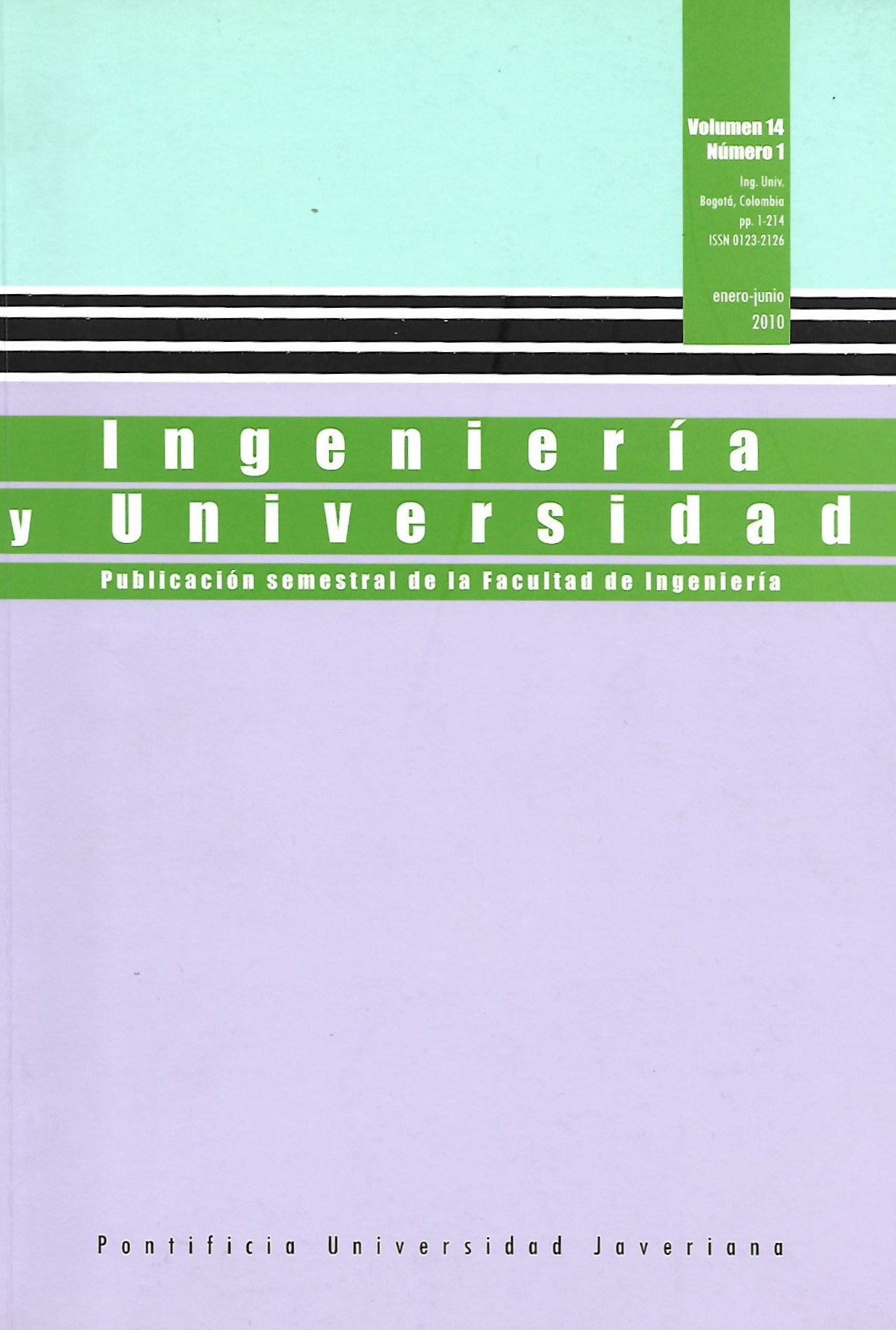Abstract
Managing massive data storage repositories is one of the most important problems to solve in virtual research environments, where the complexity of handling large volumes of data involves providing a high degree of control to ensure that data are located properly and are permanently available for processing. This paper discusses the innovative creation of a massive storage system at a highperformance computer center, which uses the advantages of hierarchical storage for an efficient management of information and a proper utilization of available storage resources. Research results seek to meet the needs of researchers who need to store files resulting from tasks performed on distributed resources, without a concern about technical details of the storage technologies used.
ATKINSON, M. et al. Data access, integration and management. En The Grid 2: Blueprint for a new computing infrastructure. 2a ed. New York: Elsevier, 2004.
AVERY, P. y FOSTER, I. The GriPhyN project: toward petascale virtual data Grids [Documento en línea]. Technical Report GriPhyN-2001-14, 2001. <http://citeseerx.ist.psu.edu/viewdoc/download?doi=10.1.1.113.5195&rep=rep1&type=pdf> [Consulta: 23-03-2010].
AVERY, P. et al. An international virtual-data Grid laboratory for data intensive science [documento en línea]. Technical Report GriPhyN-2001-2, 2001. <http://www.phys.ufl.edu/~avery/ivdgl/itr2001/proposal_all.pdf> [Consulta: 23-03-2010].
BÁEZ, C. y PÉREZ, J. N. Planteamiento de un modelo para los servicios Grid de notificación y registro de información geográfica. Revista Gerencia Tecnológica Informática, 2009, vol. 8, núm. 20.
BARISH, B. C. y WEISS, R. LIGO and the detection of gravitacional waves. Physics Today, 1999, vol. 52, núm. 10, p. 44.
DataTAG. Research and Tecnological Development for a TransAtlantic Grid Project [web en línea]. <http://datatag.web.cern.ch/datatag/> [Consulta: 23-02-2010].
DEETHS, D. y BRUNETTE, G. Using NTP to control and Synchronize System Clocks [documento en línea]. Palo Alto (CA): Sun Microsytems, 2001. <http://www.sun.com/blueprints/0701/NTP.pdf> [Consulta: 13-04-2010].
EU DATAGRID. European Union DataGrid Project [web en línea]. <http://eu-datagrid.web.cern.ch/eu-datagrid/> [Consulta: 23-03-2010].
GOBLE, C. A. et al. Enhancing services and applications with knowledge and semantics. En The Grid 2: blueprint for a new computing infrastructure. 2a ed. New York: Elsevier, 2004.
GOBLE, C., GREENHALGH, PETTIFER, S., STEVENS, R., Knowledge Integration: In Silico Experiments in Bioinformatics. The Grid 2. Blueprint for a New Computing Infrastructure. Second Edition. Elsevier, 2004.
GRIDLAB. Proyecto GridLab [web en línea]. <http://www.gridlab.org/> [Consulta: 10-5-2009]
HADIDA, M. et al. Advanced networking for telemicroscopy. 10 th Annual Internet Society Conference, Yokohama, Japan, 2000.
HEY, A. y THREFETEN, A. The data deluge: An escience perspective. En Grid computing: making the global infrastructure a reality. New York: Wiley, 2003.
HOYOS, G. y PÉREZ, J. N. Aplicación de los algoritmos genéticos a la clasificación de imágenes de satélite en el marco de los servicios Grid inteligentes estado del arte. Ciencia e Ingeniería Neogranadina, 2007, vol. 17, núm. 2, pp. 59-76.
IBM. IBM Tivoli Storage Manager for space management for UNIX [libro en línea], 2003. <http://publib.boulder.ibm.com/tividd/td/TSPMGR/GC32-0794-02/en_US/PDF/ansh0000.pdf> [Consulta: 25-6-2009].
JOHNSTON, W. et al. High-speed distributed data handling for on-line instrumentation systems. Conference on High Performance Networking and Computing. San José, 1997.
KAUFMANN, W. J. y SMARR, L. L. Supercomputing and the transformation of science. New York: Scientific American Library, 1993.
LEE, L. Open Globus Primer: introduction to Globus software. Source Grid and Cluster Conference, University of Chicago, Argonne National Laboratory, 2008.
MONTAÑEZ, S. y PÉREZ, J. N. Modelo de portal para el laboratorio de computación Grid. Revista Ingeniería y Universidad, 2008, vol. 12, núm. 2, pp. 213-228.
National Virtual Observatory (NVO) [web en línea]. <http://www.us-vo.org/> [Consulta: 23-02-2010].
Particle Physics Data Grid (PPDG) [web en línea]. <http://www.ppdg.net/> [Consulta: 23-02-2010].
STANZIONE, D. y JONES W. Computational mini-Grid at Clemson University. Clemson: Parallel Architecture Research Lab, 2002.
STARLIGHT. The optical START TAP [web en línea]. <http://www.startap.net/starlight/>[Consulta: 23-02-2010].
STEWART, G. A. Grid data management: reliable file transfer services’ performance. Glasgow: University of Glasgow, 2006.
TAKAOKA, A. et al. International telemicroscopy with a 3MV ultrahigh voltage electron microscope. Ultramicroscopy, 2000, vol. 83, núms. 1-2, pp. 93-101.
VISTA. Visible & Infrared Telescope for Astronomy Project [web en línea]. <http://www.vista.ac.uk/> [Consulta: 23-02-2010].
WIKIPEDIA. Storage Area Network [web en línea]. <http://en.wikipedia.org/wiki/Storage_area_network> [Consulta: 25-4-2009].
WULF, W. The national collaboratory. En Towards a national collaboratory. New York: Rockefeller University, 1989.
This journal is registered under a Creative Commons Attribution 4.0 International Public License. Thus, this work may be reproduced, distributed, and publicly shared in digital format, as long as the names of the authors and Pontificia Universidad Javeriana are acknowledged. Others are allowed to quote, adapt, transform, auto-archive, republish, and create based on this material, for any purpose (even commercial ones), provided the authorship is duly acknowledged, a link to the original work is provided, and it is specified if changes have been made. Pontificia Universidad Javeriana does not hold the rights of published works and the authors are solely responsible for the contents of their works; they keep the moral, intellectual, privacy, and publicity rights.
Approving the intervention of the work (review, copy-editing, translation, layout) and the following outreach, are granted through an use license and not through an assignment of rights. This means the journal and Pontificia Universidad Javeriana cannot be held responsible for any ethical malpractice by the authors. As a consequence of the protection granted by the use license, the journal is not required to publish recantations or modify information already published, unless the errata stems from the editorial management process. Publishing contents in this journal does not generate royalties for contributors.


